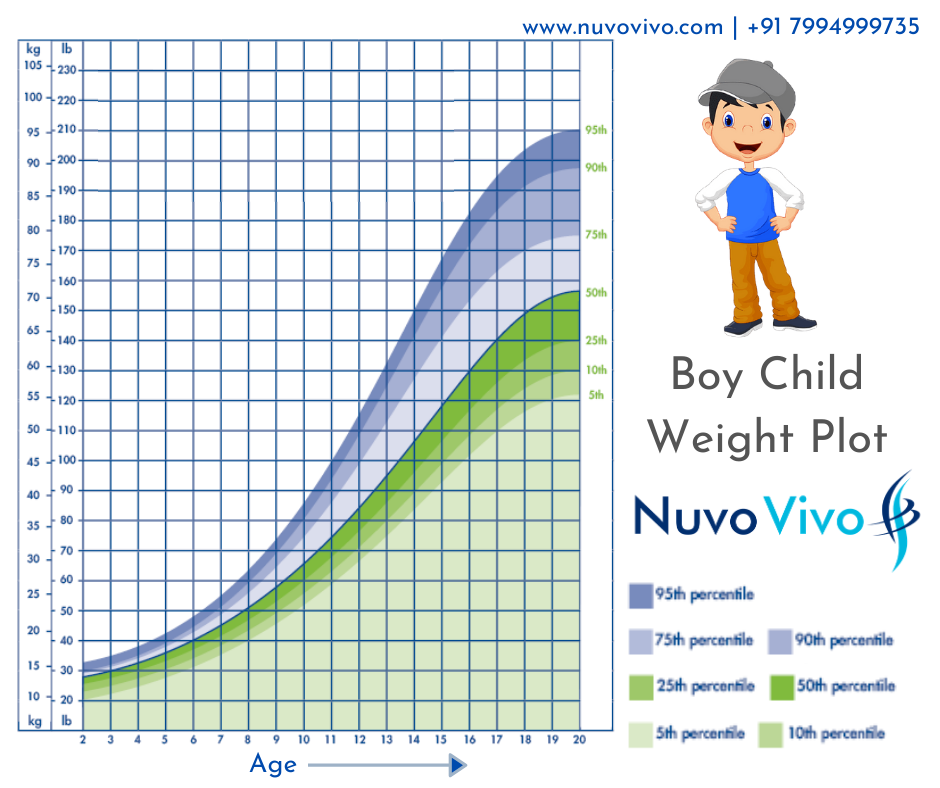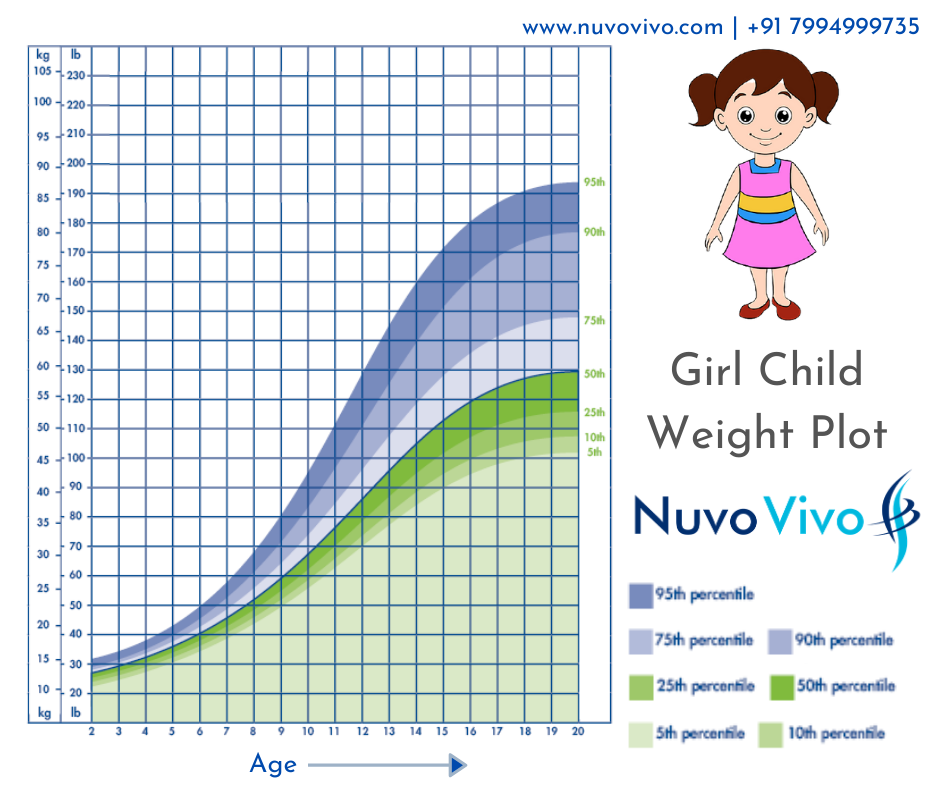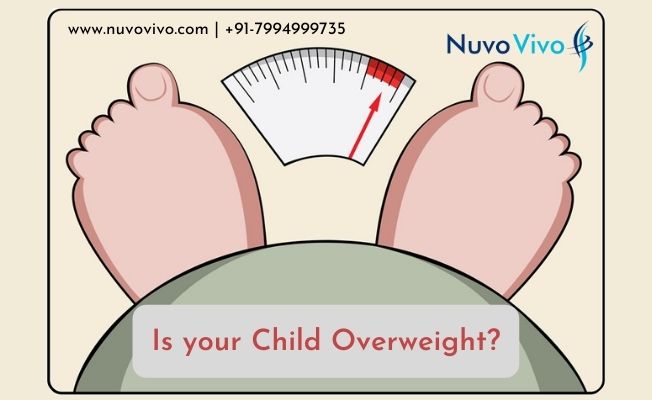Is your child over weight or obese? Are you looking for a weight loss plan for your child?
Bur before you get on to that, our question will be – How do you assess if your child is over weight? Is BMI the right way to go about to check if your child is overweight?
BMI is not a reliable method to check if your child is overweight! BMI is a indicator for obesity for adults and not children. (Infact, BMI is not a reliable indicator even for adults)
Instead of BMI, the better indicator will be a ‘Weight Vs Age Percentile Chart’
Weight Vs Age Percentile Chart
Note that there are two seperate charts – one for boy child and another for girl child. The age of child is marked at the X axis of the chart and the weight in kilogram/pounds is mentioned on the Y axis. Once you locate their weight and age, locate the corresponding shaded color that it falls in. Each of the shaded colour light green to blue has a certain percentile value as shown in the bottom right of the chart.
If you got 95% (dark blue) for the intersection of weight vs age, that means the child weighs more than 95% of other kids of the same age!
Boy Child – Weight Plot

Girl Child – Weight Plot

Why is tackling child obesity important?
Fat is stored inside fat cells – also known as adipocytes, in the form on triglycerides. We are all born with a fixed number of fat cells – nearly 25 – 30 billion in numbers! The total number of fat cells increase up till the teenage and thereafter, it remains constant.
If a child becomes over weight, the number of fat cells increases, where as an adult that gains weight after teenage does not increase the number of fat cells – instead only size of the already existing fat cell increases, as it swells up storing more triglycerides.
This means, a person who has been over weight during childhood is more prone to stay over weight even as an adult. Further, obesity not only impacts the health, it also has a profound impact on the confidence and emotional well-being of the child.
How to tackle Child Obesity?
Childhood obesity can be because of multiple reasons ranging from genetic factors, hormonal issues or environmental factors such as over eating, lack of physical activity etc. In most cases, a child is overweight because of excessive calorie consumption with no exercises or physical activities
Managing the diet and exercise of an over weight child has to be approached slightly different from than of an adult who is over weight! This is because it is extremely important to make sure that the child also builds a healthy relationship with the food. In the name of the dieting, the child should not be constrained from essential nutrients, as it is important for their general growth.
Weight loss happens because of a calorie deficit. Instead of resorting to reducing calories for creating a deficit, it is always better to increase the activity. Nudge them to be more active, engage them in games and sports activities etc, along side opting for healthier food choices. Include more protein and fiber their menu as they increase the satiety quotient of the food. Protein intake of 1 – 1.5 grams per kilogram of the body weight is the ideal range. For example, if your child weighs 30 kg, the protein intake should be kept atleast around 30 gms, with the maximum limit at 45 gms of protein
Approach your child’s health improvement agenda from a ‘fitness‘ perspective, rather than an overt ‘get healthy‘ perspective. This is because the word ‘fitness‘ is more exciting as far as a child is concerned, as it also means looking good, being in shape etc!
As a parent, you also have the most important role to play in your child’s health. Most often, the child is over weight because the parent themselves are over weight or has a sedentary lifestyle with very less physical activities. Children pick up eating habits from their parents, hence make sure you do not stock up junk food, calorie bomb cookies, fried food and sugar sweets etc! Be the leading light in showing your child what healthy eating is!

